In 2018, following years of research by a network of over 350 international institutes, the conceptual design of a potential Future Circular Collider complex took form, unlocking an epic vision spanning across the century [1-4].
FCC plans amplify the trailblazing explorations already underway at CERN's Large Hadron Collider, the world's most powerful particle accelerator to date. A collaborative dream is rising, with Europe spearheading a staged accelerator program that could first uncover hidden properties of the recently discovered Higgs boson before constructing even more mammoth infrastructure to smash protons together with unprecedented energies - potentially unveiling new phenomena beyond physics' prevailing theories [5-8].
Realizing this long-term strategy promises to reinforce Europe's preeminence in fundamental research while inspiring global cooperation toward charting unknown territories underlying cosmic origins. As details of the elaborately optimized designs materialize, the days count down toward a pivotal decision whether to proceed with a multi-decade endeavor poised to elucidate outstanding mysteries of the quantum and cosmic frontiers.
This Science Shot summarizes the baseline design parameters and key technological research directions for realizing the FCC complex, as well as next implementation steps recently boosted by the launch of the FCC Innovation Study (FCCIS).
FCC-ee Lepton Collider Overview
The FCC-ee conceptual design comprises a 97.75 km double-ring lepton collider following the general infrastructure layout planned for the subsequent FCC-hh hadron machine but with specially optimized interaction region geometry and beam optics (Figure 1) [2]. The electron and positron beams would collide at production-threshold center-of-mass energies corresponding to the Z boson (91 GeV), W boson pair (160 GeV), Higgs boson associated with Z (240 GeV), and top quark pair (365 GeV), with further possible operation slightly above the tt threshold. Key design parameters spanning FCC-ee’s energy regime are listed in Table 1.
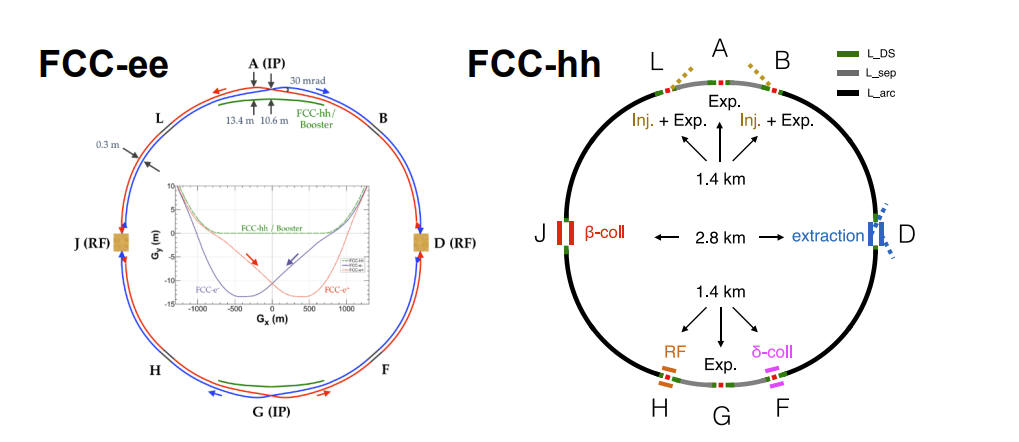
As shown in Figure 2, the luminosity performance surpasses that of proposed future linear e+e- colliders over FCC-ee’s full center-of-mass energy range up to about 400 GeV, above which linear colliders and ultimately a muon collider could provide better luminosity [9]. Notably, FCC-ee would measure the entire Z physics program within minutes that previously required years by the Large Electron Positron Collider (LEP).
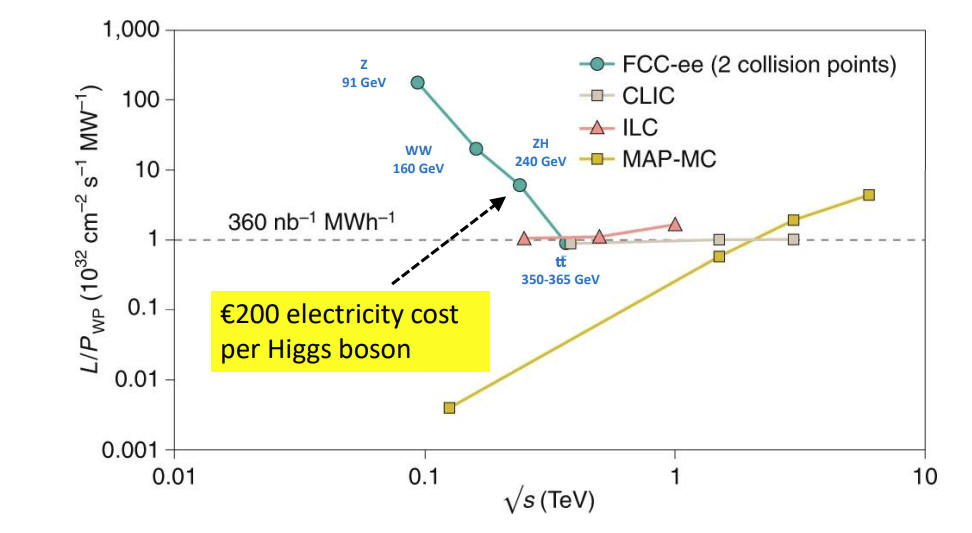
[[Figure 2: Luminosity per input electrical wall-plug power vs center-of-mass energy for proposed future lepton colliders, showing FCC-ee superiority up to ∼400 GeV.]]
The FCC-ee incorporates several key concepts and technologies demonstrated by existing and past lepton colliders: crab waist collision schemes from DAΦNE and SuperKEKB to enhance beam-beam performance [10,11]; beam polarization development from LEP, HERA and RHIC; collider and detector instrumentation; and top-up injection as used at B factories and SuperKEKB to maximize integrated luminosity [12].
The FCC-ee must also address some new challenges, for which active R&D efforts are in progress:
- managing significant collision-driven heat loads up to the multi-kW level in the interaction regions;
- employing specialized crab waist optics; developing single-shot diagnostics to resolve bunch dynamics affected by beamstrahlung;
- designing optimized superconducting radiofrequency systems for high efficiency and lowered construction costs;
- applying ultra-thin vacuum chamber coatings to mitigate electron cloud buildup arising from the 100 km long beam vacuum chamber [13];
- and demonstrating spin polarization capabilities up to center-of-mass collision energies of 365 GeV to enable electroweak precision measurements [14,15].
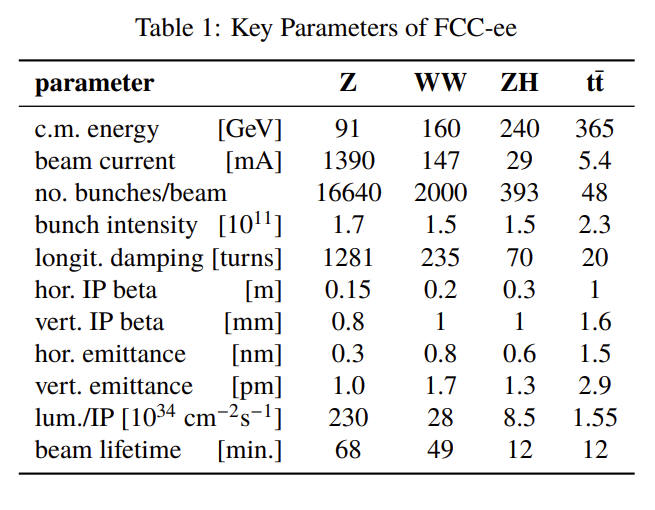
FCC-hh Hadron Collider Overview
The FCC-hh aims to achieve roughly an order of magnitude increased energy and luminosity compared to the LHC and High Luminosity LHC: 100 TeV center-of-mass proton-proton collisions with integrated luminosity goals surpassing 20 inverse attobarns over 25 years of operation [3]. Realizing this goal requires developing 16 tesla superconducting dipole magnets, almost double the LHC’s 8.3 T field strength provided by niobium-titanium (NbTi) technology. Recently substantial progress in advancing niobium-tin (Nb3Sn) conductors and full scale dipole magnets toward and beyond the 16 T benchmark has been reported by partner institutes in the FCC collaboration [16,17]. Table 2 shows a comparison of principal parameters for FCC-hh and the LHC in various operational configurations.
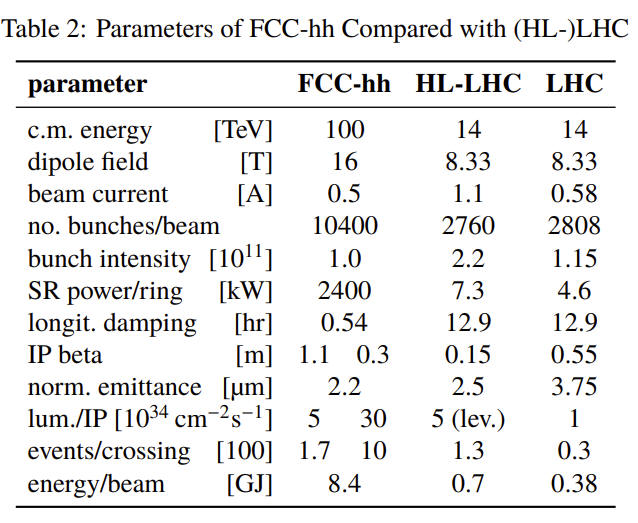
Other areas demanding focused R&D include handling extremely high total synchrotron radiation power of ∼5 MW per beam from the ultrarelativistic protons, mitigating electron cloud buildup that could otherwise induce beam instabilities, designing experimental detectors capable of filtering and analyzing over a billion proton collision events per second, and engineering machine protection systems given the 8 GJ stored beam energy — about 20 times higher than LHC beams [18].
Recently a fully equipped test stand including representative beam screen vacuum chamber prototypes compatible with 50 K operation started experiments at the KARA synchrotron light source to benchmark models for suppressing electron cloud accumulation through optimized chamber surface conditioning [19-22].
FCC Implementation Strategy and Global Collaboration
The tunnel infrastructure baseline positioning along the France-Switzerland border was developed considering construction feasibility and safety, flexibility for locating large underground caverns to house experiments, and connections to existing CERN sites. Optimization of the detailed layout and placement continues through reviews interfacing engineering considerations with environmental impact and regional planning perspectives [23].
The notional integrated FCC program timeline in Figure 3 spans from administrative startup through approximately 15 years of lepton collider physics until pausing FCC-ee operations to install FCC-hh, followed by 25 years proton collider runs and eventual decommissioning by around 2090.
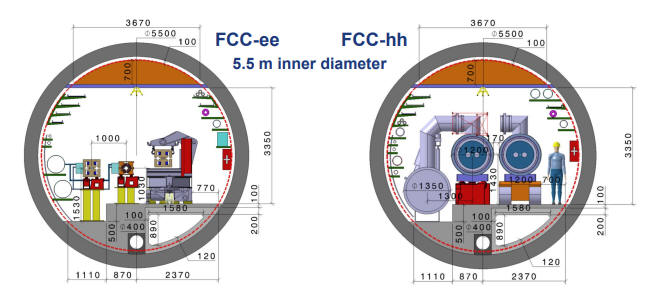
[[Figure 3: Envisioned integrated FCC program implementation timeline]]
Realizing the FCC requires substantial R&D across accelerator, detector and computing technologies paired with increasing international teamwork and collaborations with industry. Following the model of CERN’s past successes, the FCC study has already brought together over 135 institutes and 30 industrial partners from 34 countries, additionally attracting support from the European Commission framework and other programs to advance the accelerator designs, technologies, infrastructure engineering studies and physics simulations. Recently launched FCC initiatives aim to extend these worldwide partnerships into the host countries’ planning processes in order to establish feasibility, gain public support, and propose concrete paths leading from site specific optimizations onto potential groundbreaking within approximately the next 10 years.
The FCC Innovation Study (FCCIS) project represents a first implementation-oriented effort aligned with these aims [24]. With funding from the European Union’s Horizon 2020 program supplemented by substantial matching contributions from a consortium of academic and industry partners (Figure 4), FCCIS will advance design of the lepton collider, organize detector R&D across an expanding international community, and work closely with host state authorities on establishing viable plans toward hosting, building and operating all aspects of the future FCC infrastructure.
![Technical schedule of FCC integrated project [7,12]. Top row shows the years from start of project implementation](img/blog/FCC6.jpg)
[Figure 4: FCCIS consortium composition breakdown]
Summary and Future Outlook
In summary, the FCC conceptual design phase recently completed through international teamwork has yielded detailed baseline parameters and implementation steps needed to realize construction of a post-LHC circular lepton collider succeeded by a new 100 km tunnel hosting the ultimate energy frontier hadron collider. The FCC-ee would operate as a “Higgs boson and electroweak factory” at 90-365 GeV center-of-mass energies, incorporating technological advances from past and present facilities worldwide while innovating in new areas like polarization control and nanometer-scale vacuum chamber coatings. The FCC-hh aims to sustain Europe’s leadership in high energy physics by colliding protons at 100 TeV, nearly an order of magnitude beyond the LHC’s capability. Both FCC machines would maximize scientific output while minimizing costs by fully exploiting CERN’s existing infrastructure and taking advantage of common civil engineering between the stages.
The recently kicked-off FCC Innovation Study signifies an important first phase toward global realization of the FCC vision by bringing together academic and industrial partners from around the world, applying for hosting agreements, performing technical design optimization and site-specific engineering studies, advancing supporting key technology R&D programs, promoting detector collaboration, and fostering positive public engagement so that construction of the post-LHC particle collider complex could proceed from approximately 2030. Aligned with recommendations from the European Particle Physics Strategy Update 2020, CERN has already constituted a formal FCC collaboration team that will coordinate these multi-faceted efforts toward a deciding governance milestone around 2025.
References
- M. Mangano et al., Eur. Phys. J. C 79, 474 (2019) 2
- M. Benedikt et al., Eur. Phys. J. ST 228, 755 (2019)
- F. Zimmermann et al., Eur. Phys. J. ST 228, 1109 (2019)
- M. Benedikt et al., CERN-ACC-2019-0007 (2019)
- M. Benedikt et al., Ann. Rev. Nucl. Part. Sci. 69, 389 (2019)
- M. Benedikt et al., Nat. Phys. 16, 402 (2020)
- R.K. Ellis et al., CERN-ESU-004, arXiv:1910.11775 (2019)
- E. Gianfelice-Wendt, Phys. Rev. Accel. Beams 19, 101005 (2016)
- M. Zobov et al., Phys. Rev. Lett. 104, 174801 (2010)
- A. Bogomyagkov et al., Phys. Rev. ST Accel. Beams 17, 041004 (2014)
- K. Shibata, presented at the IPAC'20 Conference (2020)
- E. Belli et al., Phys. Rev. Accel. Beams 21, 111002 (2018)
- A. Blondel et al., arXiv:1909.12245 (2019)
- M. Boscolo et al., Phys. Rev. Accel. Beams 20, 011008 (2017)
- A.V. Zlobin et al., IEEE Trans. Appl. Supercond. 30, 4000805 (2020)
- CERN News Release: “A demonstrator magnet produces a record magnet field” (2020)
- I. Bellafont et al., Phys. Rev. Accel. Beams 23, 033201 (2020)
- L.A. Gonzalez et al., Phys. Rev. Accel. Beams 22, 083201 (2019)
- I. Bellafont et al., Phys. Rev. Accel. Beams 23, 043201 (2020)
- L.A. Gonzalez, private communication (2020)
- M. Benedikt et al., Eur. Phys. J. ST 228, 261 (2019)
- M. Benedikt et al., CERN-ACC-2019-0007 (2019)
- J. Gutleber, FCCIS presentation (2020)